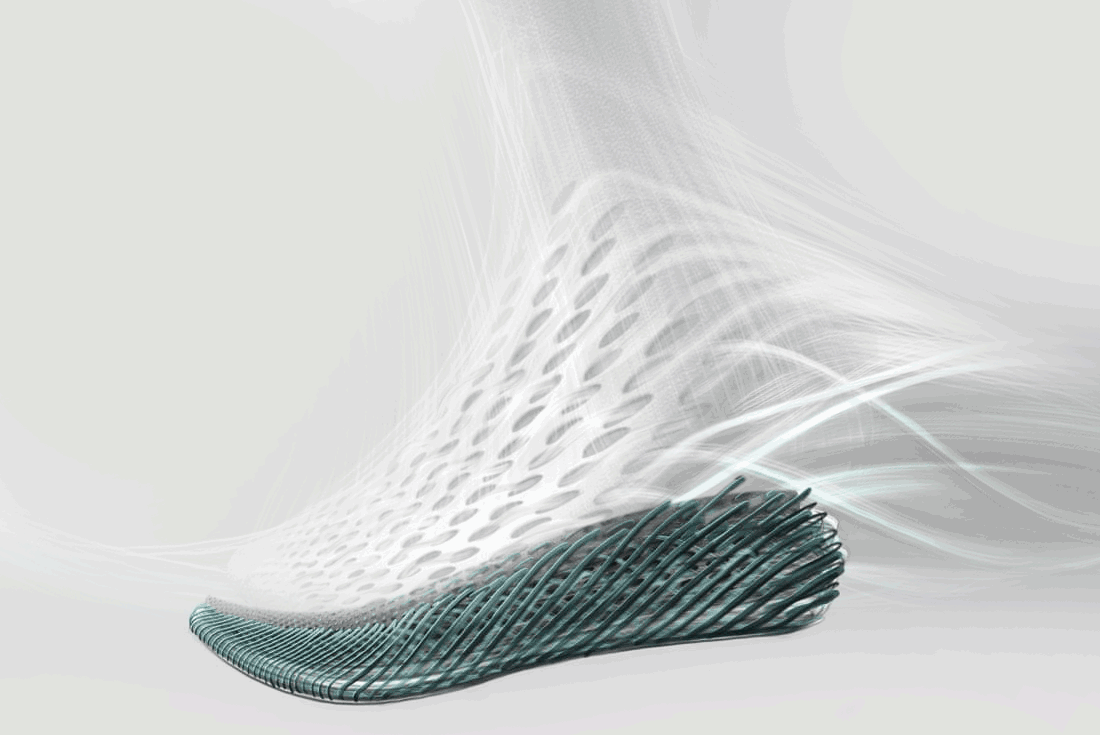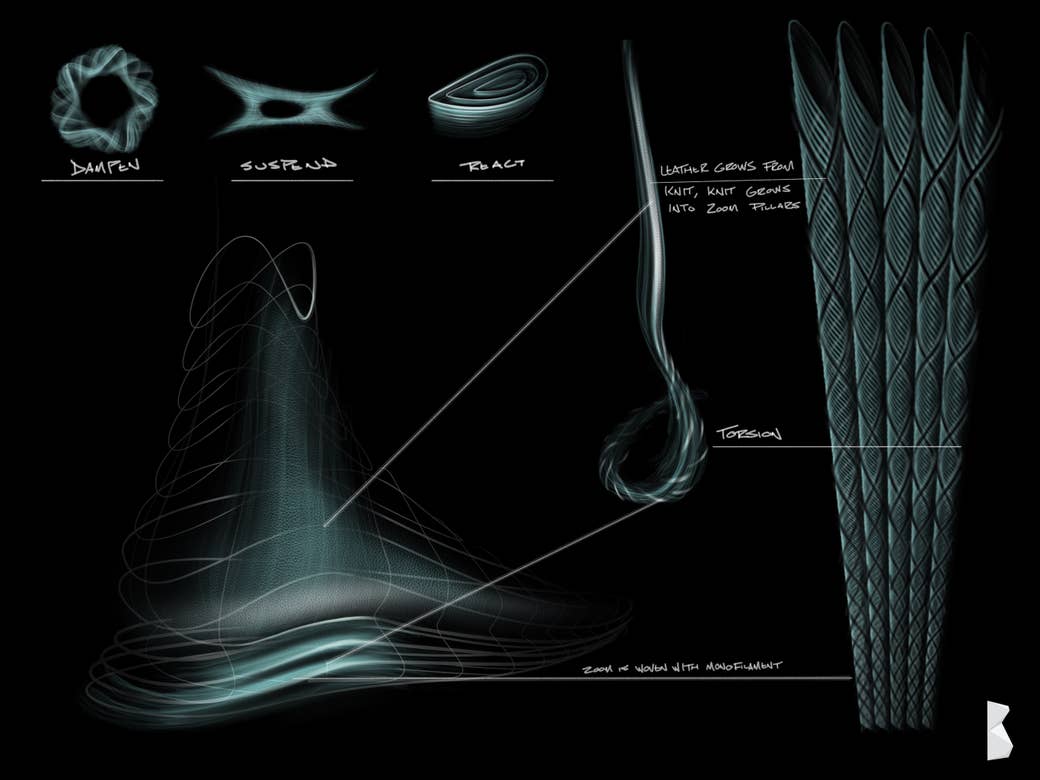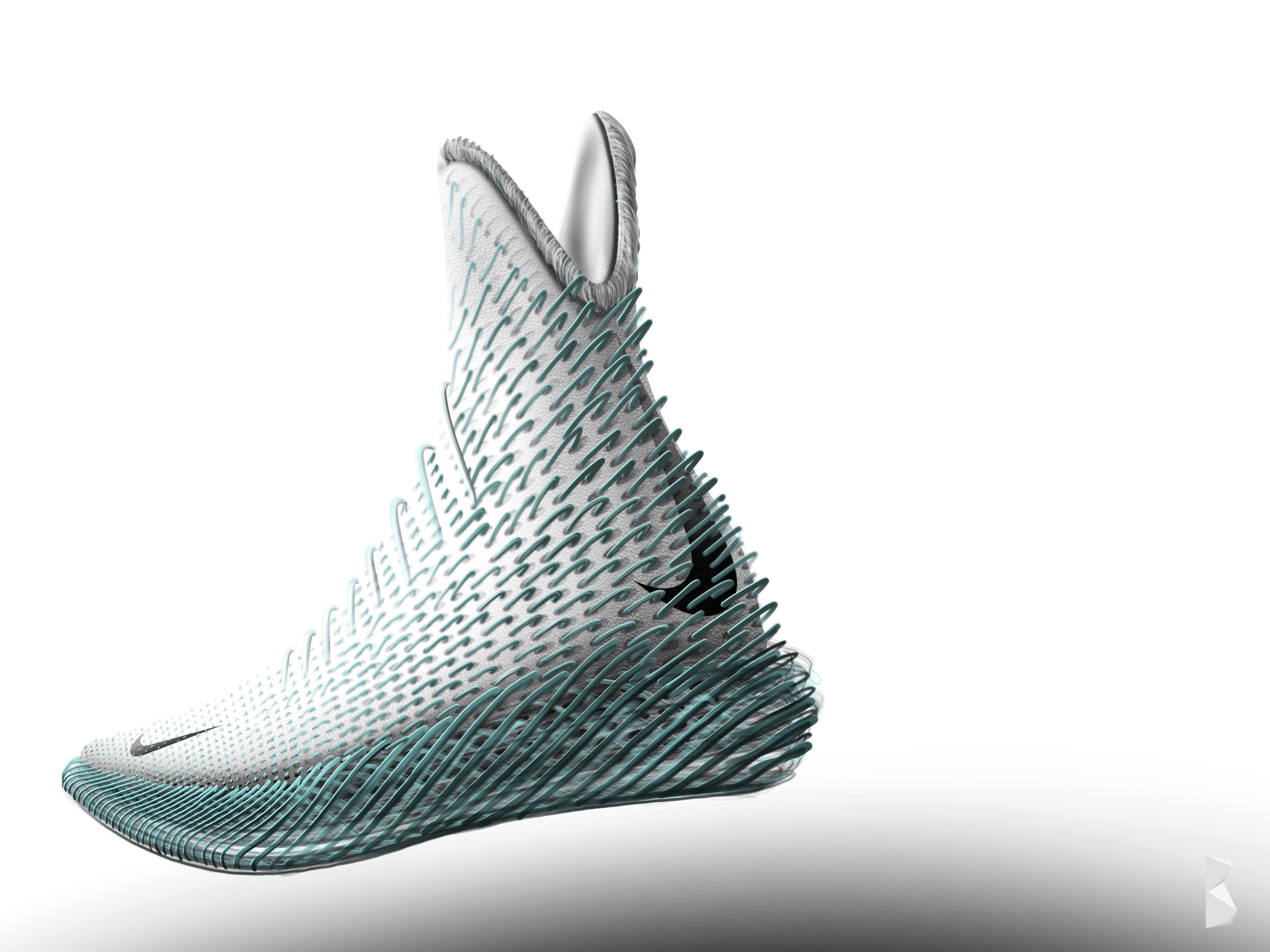
Basketball shoes are in a weird spot right now. They went from being what dominated the marketplace and what brought most sneakerheads into the footwear world to becoming the most overlooked product. The market shifted from being about innovation and fresh takes to sneakers that are far simpler. Part of it is because of changing trends and part of it is just brands overthinking things. What the industry needs now is an Alpha, a new beginning. A revolution of what footwear is. To do this, we have to rethink what the future of the game is and how that will affect the final product. Basketball shoes need a new reason to exist.
With that in mind, we’ll take my experience as a designer to imagine what the best Nike basketball sneaker is going to look like in the year 2048, a full 30 years down the road. And it’s nothing like what’s on the market right now—not even the auto-lacing Nike Mag. Here’s why.
In the future, how an athlete wears, interacts, and experiences basketball shoes will be different. The entire process of footwear—from manufacturing and what it offers the player—will be revolutionized.
We already see a large increase of using data to make an athlete better. Right now, it’s tracked, studied, and then applied in the coming games. The game of the future is going to eliminate all that by giving instantaneous data to the athletes and coaches.
Thirty years from now basketball will likely be heavily influenced by Artificial Intelligence. The sport won’t become a bunch of robots running on the court, but AIwill give athletes more tools to improve their game. To do this,the ball and the court will be enhanced with smart materials that track every movement and instantly implement that data back to the athlete.
By giving the players an intense level of in-game data to improve their performance, they can focus on where they need to be next. Imagine as a player, you and your gear knew what direction the ball was going to fall after a missed shot, giving you an immediate response before it has happened. That kind of intel would make the unpredictable, predictable. With the ball being the centerpiece of the data, it would be sending information to everything connected to it: the court, the hoop, the player, and, most importantly, the shoes. The game would become more intelligent, allowing a player to take their natural talent to peak levels.
So, how would all of this actually look in a sneaker?

Evolving the Construction Process
The process of making shoes has always been an assembly of parts that is formed around a last, which gives the shoe its shape. While there have been great strides in manufacturing process and technique over time, the overall composition of a shoe is still a system of individual pieces that act as one. Innovation in the world of athletic footwear has always been pushing to eliminate pieces. But the reality is that the more you add to something, the more you are asking of it as well.
In the future of footwear there will be no assembly or restraints of shapes and forms that can be made.

Creating New Materials
By using Additive Manufacturing,materials will be grown to create endless possibilities that will directly improve an athlete’s game. Think of the current Nike HyperDunk, it’s a knitted upper with various types of yarn, with an internal foam package and heel counter, a sewn-on tongue, a glued-on React foam midsole with an internal shank plate, and then glued on rubber. Imagine if all those materials just blended together to become one.
Think of it as a strand of thread or DNA that starts out as knit in the upper. On the backside of that thread, foam grows from it to create the collar support. As the thread grows down the foot, it grows into carbon fiber to provide underfoot support. From that carbon fiber, the tensile of Zoom Air begins to grow. That tensile then extends directly into the rubber. While all this is happening, the entire shoe is forming holistically and being injected with a resin to lock it all in place and create the Air that supports the Zoom tensile. The shoe becomes truly one piece. It becomes a piece of anatomy where each material grows into the next.
Take all of the words out of this and think about what that really enables: The upper becomes the bottom and the bottom becomes the upper. The shoe becomes one with you. It is no longer an assembly of parts; it is now just one part. What that means for the athlete is the capability to have a shoe that becomes connected to them and solves the issues they are having on the court: whether it’s cutting issues, jumping issues, or whatever might be lacking at the moment.

Making Sneakers the Deciding Factor
The size and athletic capability of players is only growing. Young athletes like Zion Williamson, who can jump out of the gym but can also muscle down, and power forwards or centers like Bol Bol, who is 7'2" but has handles and a fade-away jumper, are going to transition the sport to no longer being based off position. Rather everything relies on the scenario of the game. If the athlete is playing a different role that night, then they adjust the footwear for that game. If the coach decides they want to outrun the opposition one night, then they use the data from the opposing team’s previous game and communicate it back to people at Nike’s headquarters to update the shoe for the athlete. In real time, the innovators come up with solutions that reduce weight and provide the athlete with the needed support and send it back to the team. The trainers then print the shoe at the facility and lace them up for that night’s game. If the opposition was ready for the team’s plan, and they have to make a switch at halftime to move the player to the post, they’ll need more support from the shoes. No problem, using the game data collected the trainer prints a new pair in the locker room to make the switch within minutes.
The shoes are now part of the game plan.

Changing the Sole of the Game Forever
By having the entire game connected through AI, the athlete gets an additional advantage as their shoes tap into the data that the game is providing to help shift to what’s coming next. Think of the scenario laid out earlier of the data being tracked the moment the ball leaves the hand during the shot. The AIalready knows the form of the player is off, and that the trajectory of the ball is heading to the right side of the rim. The shoe reacts to the data by firming up the monofilament textile under the toes and locking in the knit on the lateral side of the right foot and the medial side of the left foot. This provides instantaneous underfoot support to allow the player to take off and beat the opposition to the loose ball. This transformation will be able to shave off the milliseconds of hesitation that can either win or lose the game. Your shoes will be the difference between success and failure on the court.
Let’s be real, though: this level of technicality isn’t going to be needed for the common consumer. What this would do is create a line in the market place between athlete and enthusiast. It makes basketball shoes truly tools of the game and opens the entire possibility of what off-court products can be. Additive manufacturing will influence those pieces as well by allowing aesthetics that have never been able to be manufactured before, because of restrictions to how it is made. Imagine what Air can become when it grows from your foot. The Air can literally be moving from heel to toe with each transition.
What is unique about this for the consumer is if they want a true player exclusive of the game shoe, all they have to do is print it. Nike can release that exact data in your size and have it printed at a local shop, where it focuses on 1:1 experience for the consumer. They can also take the data and apply it to you and your body type. We won’t all be as dynamic as NBA greats like Michael Jordan or LeBron James, but in the future we could apply a little bit of their game to our shoes.
Imagine truly lacing up exactly what your favorite athlete wore before you play in the state finals or, in my instance, before I destroy my son in one-on-one in our backyard. It will motivate the hell out of you to be the best athlete you can be. At the end of the day it's just gotta be the shoes.
